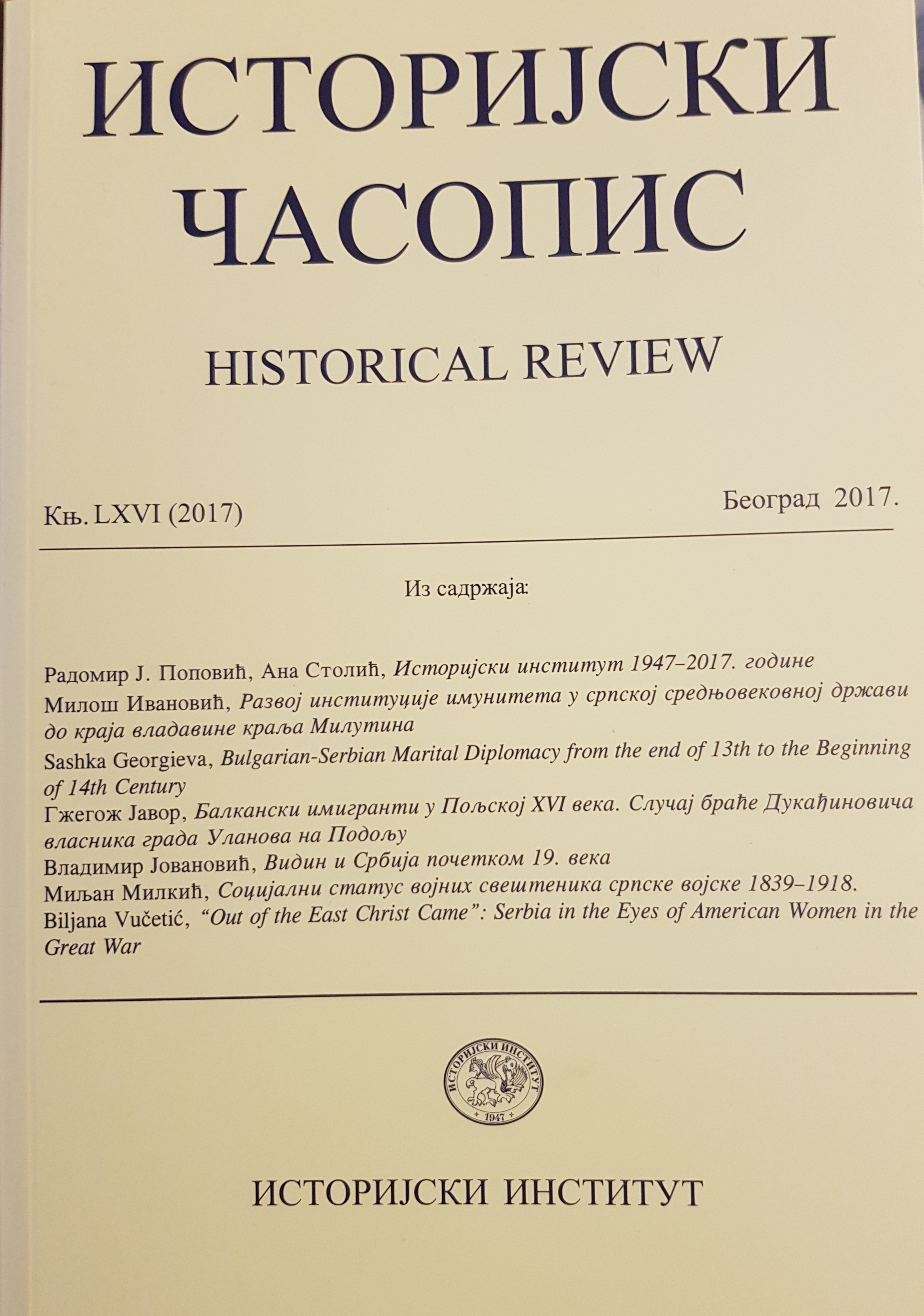Промене на српском престолу 1370–1371. године. Покушај реинтерпретације
Changes on the Serbian Throne in 1370–1371. An Attempt at Reinterpretation
Author(s): Predrag KomatinaSubject(s): History, Middle Ages, 13th to 14th Centuries
Published by: Istorijski institut, Beograd
Keywords: emperor Stephen Uroš; king Vukašin; king Marko; king Stefan Tvrtko; Serbian Empire; co-rulership; regional lords; Serbian chronicles
Summary/Abstract: In the historic memory of the Serbian people the last member of the Nemanjić dynasty, emperor Stephen Uroš was remembered as “Uroš the Weak“, an unable ruler who permitted his lords to take over the strong Empire that was left to him by his father “Dušan the Mighty“. In the Serbian epic poetry the strongest of them, king Vukašin Mrnjavčević was even credited with killing the young emperor. It was only at the end of the 19th century that Konstantin Jireček finally proved that that was not true and that the emperor outlived the king. Since then Serbian historiography has gradually come to an account according to which the emperor crowned Vukašin king and made him his co¬ruler in 1365 and then ruled along with him, although with some discrepancies, up until the death of the latter at the Battle of Marica on 26 September 1371, and then with his son and successor king Marko until his own death in early December 1371, while after that Marko continued reigning as the sole Serbian ruler. However, according to the earliest of the Serbian chronicles, the first of which was composed shortly after the events of 1371, and the second one barely twenty years later, king Vukašin overthrew the emperor and “posed on himself the crown of the Serbian kingdom“. However, the emperor – “even though he suffered from the deprivation of the imperial dignity of his Fatherland, nevertheless passed to God with glory amidst his country in his imperial dignity“, which meant that he succeeded in retaking his position of the reigning monarch of Serbia. The fact is that between 5 February 1370 and 16 October 1371 there is no mention in the sources of Emperor Stephen Uroš as the Serbian monarch. During that period, only king Vukašin is mentioned in the sources in that capacity, beginning with his charter to the Ragusans of 5 April 1370, which he issued presenting himself as the current heir to the previous Serbian rulers that benefitted the Ragusans, up until his death at the Battle of Marica on 26 September 1371. Only after the battle and the death of the king did emperor Uroš reappear in the sources, being mentioned in two Ragusan documents from 16 October and 3 November 1371. However, his second reign was of no long duration, since he died already on 4 December 1371. Vukašin’s son Marko, although he may have been crowned king after his father’s death, was not accepted by the emperor as his co-¬ruler, so after the emperor’s death the Serbian state was left without a ruler. The rule was assumed by the regional lords who ruled independently each in his own region. It was only in 1377 that Bosnian ban Stefan Tvrtko, a descendant of the Serbian royal house through a female line, was crowned “king of the Serbs and Bosnia and the Littoral and the Western parts“ and restored the Serbian kingdom, even though in name only.
Journal: Историјски часопис
- Issue Year: 2017
- Issue No: 66
- Page Range: 149-171
- Page Count: 23
- Language: Serbian

